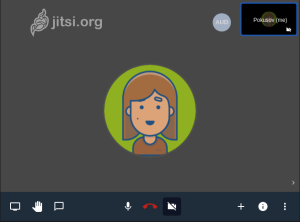How would you feel if you had to memorize a long string of numbers like “192.158.1.38” to visit a website? You’ll probably never want to use the internet again. The same goes for your customers. But fortunately, Paul Mokapetris came to rescue mankind from the behemoth of IP addresses and created domain names.
When publishing your website on the internet, you’ll first be faced with the task of choosing a name. Just because it’s not a number doesn’t mean customers will be able to remember it.
You need to choose a memorable name that also fits your brand. But how? If that’s what you’re wondering, this article will be your trusted companion. It will introduce you to the basics of domain names and their registrars. You will also learn how to choose and buy one.

What Is a Domain Name: Exploring the Basics
A domain name is a unique string of text that identifies a website. However, there’s a misconception that should be cleared at this point. A URL and domain name are not the same. They do have the same purpose, but a name is part of a longer URL.
Let’s take the URL https://www.webhostingzone.org, for example. Here, “webhostingzone” is the domain name, “https” is the security protocol, “www” is the subdomain, and “.org” is the top-level domain.
Think of your domain name as your website’s home address. Nobody wants their home address to be a mile long frustrating string of letters and numbers.
Choosing the Perfect Domain Name: Tips and Best Practices
Now that you know what a domain name is, you must be excited to choose yours. But did you know by 2015, 294 million domain names had been registered? This number has been increasing ever since. Finding a unique one in this massive pool would be like looking for a needle in a haystack. So here’s what you need to do.
Firstly, don’t just go for a random name because it will do much more than just identify your website. It has the power to win or lose customers, as nobody wants to access websites and links with weird combinations.
Also, keep it short and simple but don’t go too overboard. Anywhere between 6 to 14 characters would be the bee’s knees.
Shorter than that would confuse your readers and push them away from clicking. And longer would become cumbersome for people to type and remember.
What’s more? It can even have an impact on your SEO. So make sure to include keywords from your industry and brand. Also, avoid using hyphens, numbers, and the same letters back-to-back.
And lastly, your favorite name won’t lie on the buffet table for long. So grab it before someone else gets their hands on it.
Step-by-Step Guide: How to Buy a Domain Name
While finding the right domain name is the cornerstone, you can’t use it yet. You must first register the name on a hosting service. Now what exactly are hosting services? Well, these companies provide a service to publish your website online and make it accessible to people.
At the outset, the process might seem like a technical marathon, but it’s not. It is quite straightforward if you research and find a good registrar.
It is also worth mentioning that you can purchase a web address either directly, from a registrar, a web-hosting service, or website-building platforms.
If you’re unsure where to find these, we’ll discuss that later in this article. But for now, let’s see how you can buy a domain name.
Exploring Domain Name Registration: Process and Requirements
Assuming you have chosen a domain name following the tips shared above, let’s discuss the registration process.
First, check if the name you chose is available or not. Almost every registrar has a free domain check tool that you can use.
In case it’s already taken, you have these four options:
- Come up with a different name
- Use disemvoweling, which is a process of removing vowels from a word without affecting the pronunciation
- Pay the registrar to negotiate with the owner and see if they’re willing to sell it to you
- Go for a different top-level domain
The next step is to choose a registrar. Do your due diligence and pick the best one that suits your needs. Moreover, consider its cost and customer support.
Names can cost anywhere from $10 to $20 a year, but be mindful of the starting and renewal fees. Premium domains such as common words cost higher.
While the exact steps to get a domain name may vary for each registrar, the process is similar. Start by selecting the one you want, provide your contact details, and choose the registration period.
Remember to renew your subscription when the period expires. Depending on the registrar, you will have to create an account at some point during this process.
Next, set privacy protection, proceed to payment, and verify ownership to avoid prying eyes. And that’s it; you’ve secured your domain.
Where to Buy Domain Names: Reputable Registrars and Marketplaces
Earlier, we mentioned that buying and registration will become child’s play if you choose a good provider. So after learning how to register a domain name, it’s time to explore some registrars and marketplaces.
Let’s start with the most famous one, Namecheap, which provides free WhoisGuard privacy protection with domain purchases. It also gives names and hosting bundles which can benefit you in the long run. Their customer support has been vouched to be one of the best. Namecheap has three shared hosting plans, Stellar, Stellar plus, and Stellar Business priced at $1.98, $2.98, and $4.98 per month respectively.
WebHostingZone is another domain name provider. It has 12 TLDs and each has a different price, from $15 to $69.99. Also, you can either buy a new domain, transfer an old one, or renew it.
People have reviewed WebHostingZone as having the best customer support. It also has a domain checker and provides alternate options with prices.
Google never stays behind, does it? Its domains start at $7 per year! However, keep in mind that each TLD has a different price, .com starting from $12 per year. Other services are email forwarding, privacy protection, Google 2-Step Verification, etc. And we all know about Google’s security.
However, remember that if a name is unavailable with one registrar, it will not be available elsewhere.
Conclusion
A domain name is the web address where your website resides. Give your website a good home address by keeping it short, avoiding numbers and hyphens, and incorporating your brand keywords.
Moreover, remember your budget and specific needs when choosing a domain registrar and hosting service.
Remember, most of the registrars offer hosting, but they are not the same. Registering a website doesn’t mean you can use it until it goes live through a hosting service.








